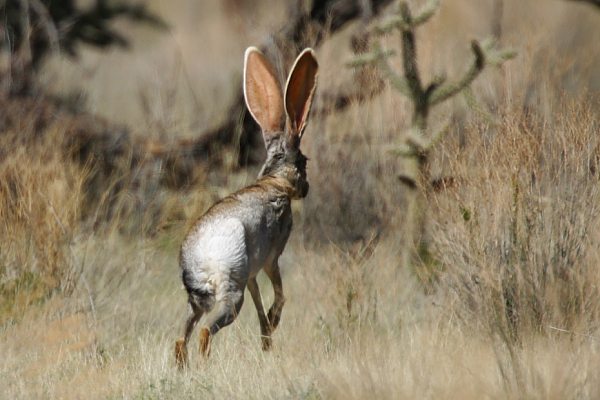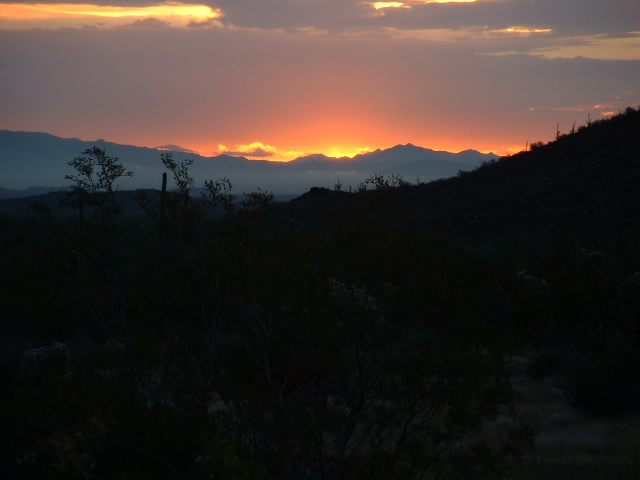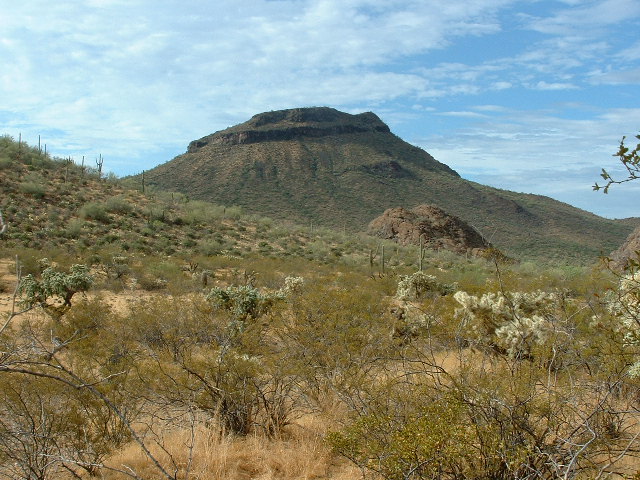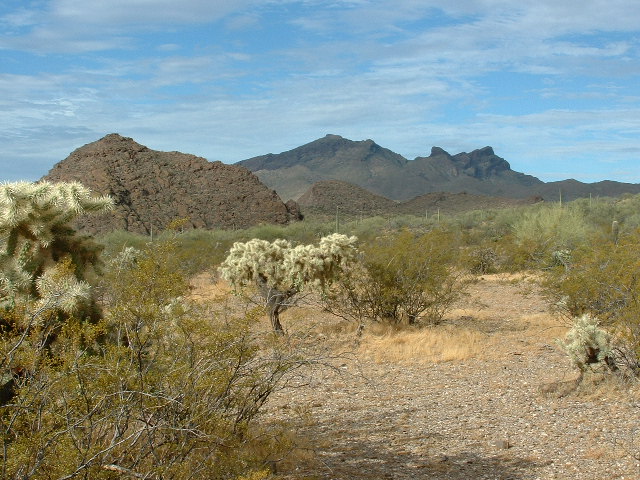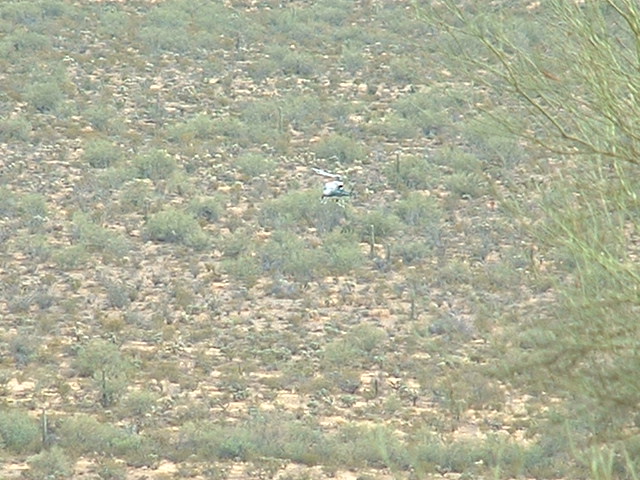This story happened one hot summer a few years ago.
Our monsoon season has arrived. Finally! It was the second-latest start of the monsoon in our history. And we also tied the all-time record for the greatest number of consecutive days with a daily high temperature of 100 degrees or higher – 39 days in a row. The average high temperature for those days was 106 degrees – way hotter than normal, even for us here in the desert. The good news is that since the monsoon started on July 18th, Tucson has had several days of good soaking rains.
On Saturday, July 23rd, I had a chance to go out to the reservation to climb. It was raining even as I left Tucson at 3:00 a.m. Once heading west on Highway 86, it was interesting how much wildlife I had to dodge while driving in the dark. There are always lots of rabbits along the roads as dawn approaches (we have three species here – the desert cottontail, the black-tailed jackrabbit and the antelope jackrabbit).
I see the occasional fox crossing the road, and coyotes too – I’ve even seen a few bobcats and ring-tailed cats. But this night I saw dozens of kangaroo rats and some kind of amphibian, either toads or frogs, hopping across the road or just sitting in the middle of it. Maybe the rainy weather is bringing more animals out.
Nowadays, there is a U.S. Border Patrol station at the junction of AZ 86 and Indian Highway 1. It is a tower which can be raised up on a scissor-type of jack and an agent can sit in it and get a good view of passing vehicles. Anything that looks suspicious will be pursued by another agent in a waiting vehicle. As I turned south at this junction, they shone their lights at my truck to get a good look but must have decided I was not of any interest.Turning south, I drove another twelve miles and arrived at the village of Gu Vo which lay deep in slumber. From there, I drove dirt roads to the same area I had climbed in two weeks ago, on the east side of the Ajo Range. If I were successful today, I wouldn’t need to come in on these dirt roads again – I could move to a new area farther south.
Parking well off the road, I stepped out of the truck and it was as if I had walked into a sauna. My glasses fogged up immediately. This was the first time this season that I had been out climbing in the monsoon weather. As I prepared my pack, the sun rose and shone through a small cloudless gap on the eastern horizon. The sky was otherwise overcast, and it looked like it wouldn’t be so hot today, just very muggy.
My goal was to climb two mountains, one after the other, before returning to the truck. As I headed out across the desert, I soon realized that today would be very uncomfortable due to the humidity. I was soon drenched in sweat, even though the sun wasn’t shining and I was only walking along flat terrain. I was thinking back to the years before I moved to the desert, remembering that it was often this uncomfortable in other places I had climbed. In fact, the desert is about the only place where, due to the normally low humidity, you can climb comfortably nearly year-around. I crossed a few washes and arrived at the base of my first objective, Peak 3435.
This is one of a trio of 800-foot-prominence peaks closely clustered in this area, and it is quite striking. A few hundred feet upslope, I surprised a group of javelina. They scampered across the hillside and were soon lost to view. I arrived at a plateau at the 3100-foot level and enjoyed the panorama of the Ajo Range to the west.
A short while later I was standing on the summit. As I was filling out my summit register and building a cairn, I heard the sound of a distant helicopter. I spotted it flying low over the desert floor perhaps two miles to the north, but then lost sight of it behind the north ridge of my peak. As I kept listening, I heard it slow down and hover near my truck. They had undoubtedly spotted it and were stopping to check it out, as it was directly in their flight path. I could tell from its colors that it belonged to the U.S. Border Patrol. I wasn’t surprised to see it, as this area is thick with illegal activity. They may have even landed, as there was a good spot in which to do so near my truck. If they did, they would have immediately seen the permit which I carry from the Hickiwan District posted clearly in my window, and then not have been concerned any more about my presence there.
I started to descend the peak on its east side (I had ascended its northwest side) and quickly got cliffed out. Backtracking to the north, I soon outflanked the problem, continuing my descent. Then I heard the chopper again – it was flying through valleys to the east of me, even flying right over my next objective. I started to fantasize about their seeing me and setting down and offering me a ride back to my truck (but only after I had climbed my next summit, of course!). They even flew through the valley right below me, but they didn’t see me. They are usually looking at the ground below for undocumented aliens or drug smugglers, not 800 feet up-slope.
To be continued…………….
Please visit our Facebook page at https://www.facebook.com/pages/Desert-Mountaineer/192730747542690

